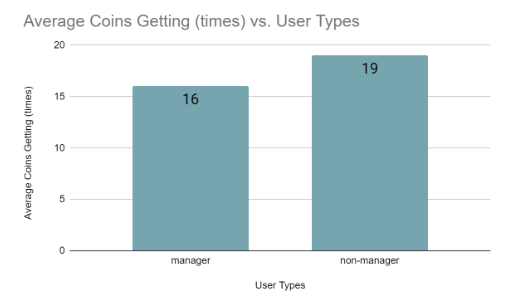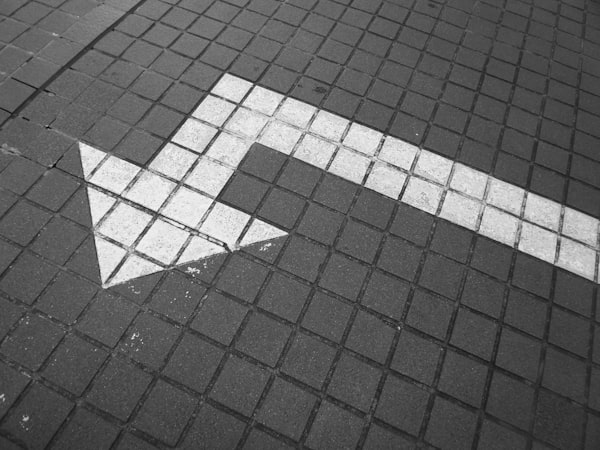Studies show that it has to do with the work culture, not you. But there are things you can do to make recognition more accessible to your top managers and leaders.
Hierarchy of Recognition
In our modern workplace, recognition has become an important mechanism and instrument to help reinforce positive behavior and motivate top performers. Leaders and managers are central to giving out recognition to their teams and peers. And now platforms such as Kudos and Happily put the power of recognition in the hands of employees.
People analytics have paved the way for using data to better understand how people work and behave in different organizations. When tracking recognition, we find that managers are much less likely to get recognized in the workplace. This phenomenon is further augmented the higher you are in your organization.
What’s happening, and why is recognition limited to a top-down exercise? Is there less cause to recognize managers and leaders? Our studies show the impact of this condition and explore the reasons why this is happening.

Managers receive less recognition than non-managers
Our Hypothesis:
“The higher you are in the organization, the less recognition you receive from others around you.”
Our Study
We collected recognition data across 4 different companies with a total of 151 managers and 768 non-managers. Recognition was given and received in the form of coins, which managers and non-managers alike were empowered to give out to anyone in their organization.
Happily Power-ups allow employees to give out recognition in many forms: +3 coins (with a cool-down period of 7 days) and +5 coins (with a cool-down period of 14 days). Therefore, an employee can give out recognition up to 6 times over 1 month.


The participants were nudged to give recognition but not forced to give to others at any point in time. Nonetheless, 80% of the group participated in giving out recognition to others while 97% of the group were recipients of recognition over the 10 months.
Our findings:
- Managers are 19% less likely to receive recognition (getting coins) vs individual contributors
- The higher you climb in the organization, the less likely you are to regularly receive recognition
- The top-level manager (CEO) is 19 times less likely to receive recognition from others
- Even managers themselves were less likely to recognize their managers




This phenomenon was observed across all companies studied in multiple business lines, sectors, and corporate structures. We observe that it’s an organizational culture that plays a pivotal role in how recognition is given and how well managers are involved.
What is happening?
To better understand, we conducted primary market research by talking to managers and non-managers alike to explain why managers and leaders are so much less likely to get recognized.
Our observations:
- Employees do not realize they can recognize their managers
It did not occur to many employees that they could recognize their managers using the recognition platform. They assumed that recognition was something they could only give to their peers. - Employees are more concerned with the feelings and well-being of their peers than their manager
There is solidarity among coworkers at work which does not include their managers. Employees reveal that they will look out for their peers more. Also, they are concerned with how they would be perceived by others if they were to recognize their manager. - Employees feel that it is part of a manager’s job to help them
Many employees do not have an understanding of mutual recognition between managers and the team. It has been a part of traditional work culture that managers are responsible for taking care of their teams, and the team’s role is to receive tasks and subsequently recognition for work well done. Giving recognition to their managers and leaders has never been a part of the social construct at work.
What can we do about it?
As recognition is becoming a more important part of our workplace [1], there is a need to reassess how managers can be included. Managers and leaders need recognition as well.
Here are some things that can be done to find the right balance of recognition, making sure your managers and leaders are involved and rewarded.
- Set a standard and make it clear
When introducing a recognition program in your workplace, be explicit about how recognition should be given. Emphasize that giving recognition to managers and leaders is a great way to let them know their work is appreciated. - Initiate a culture change
A culture change requires a change in mindset of how your employees approach a situation or challenge. These transformations may not happen overnight, but setting the right tools and standards in place is the right catalyst. Be prepared to reinforce these values regularly and know that it will take time to see the results across your entire organization. - Provide good examples
The ability to give recognition is not innate. And there are good ways and bad ways to do it. For example, recognition should be more effort driven than results-driven so that the right actions are reinforced.
Share examples of good recognition given out with your team and some good ideas to give recognition are shown at [2].
A culture of recognition and appreciation is crucial for your organization
Recognition has become a vital component of our engagement and success in the workplace. For it to work, it requires company-wide adoption and the right set of standards that will drive your culture change. In what has been a traditionally top-down exercise, better practices can help ensure your managers and leaders will also be included and rewarded through recognition.
Today, there is an imbalance between who gives and receives recognition. Managers and leaders are up to 19x less likely than non-managers to receive recognition, even though they may need it the most.
Recognition not only brings happiness to those involved, but it helps maximize overall productivity, and job satisfaction and better aligns employees to company values. It will help maximize profits, reduce costs, and make your employees better appreciate the moments and actions that matter [3]. Now it’s time for you to make a difference in their lives!
Note from the authors
We hope that this article will help you have a better understanding of how recognition works and what phenomena we need to correct. Our goal is to contribute in a positive way to your organization’s cultural transformation. We recommend that you subscribe to our blog to keep in touch with us for our future articles, studies, and publications.
Happily is a one-of-a-kind platform that drives unprecedented feedback, recognition, insights, coaching, and more. Visit our website to learn more, request a demo, and be on your way to recognizing and engaging your talent.
References:
[1] https://www.thebalancecareers.com/the-power-of-positive-employee-recognition-1919054
[2] https://blog.preciate.org/103-examples-workplace-recognition
[3] https://cuttingedgepr.com/free-articles/employee-recognition-important/











